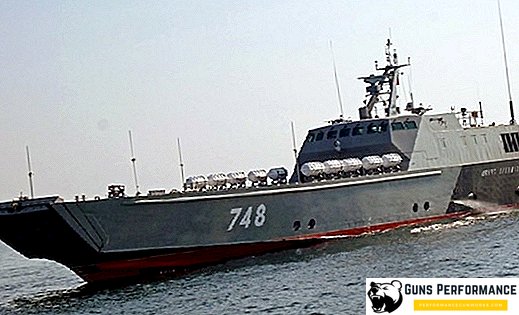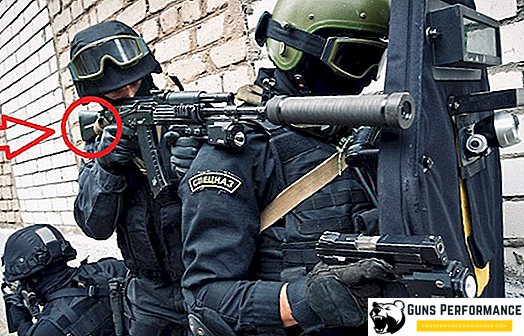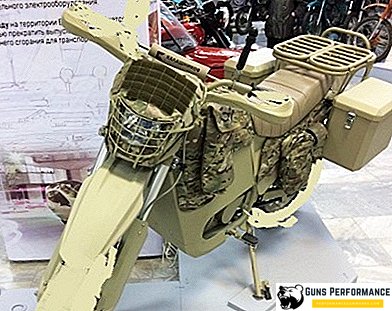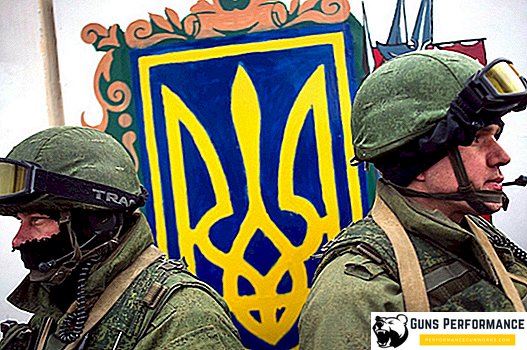
Landing operations today are one of the most basic and frequently used methods of warfare. In the era of domination on the battlefield of aviation and missiles, the capture of coastal bridgeheads should be carried out quickly and rapidly. Speed during the landing operation becomes the key to success. The faster troops and military equipment are delivered to the landing zone, the more chances not only to gain a foothold on the bridgehead, but also to build on success. Russian sailors in this regard have the most modern and most prepared technical equipment. Today a special role in conducting amphibious operations is played by special vessels - amphibious assault boats of the Dugong type project 21820.
The main scope and combat capabilities of landing craft
With the fast delivery of military units and military equipment to the bridgehead, not all navies in the world can handle. Having powerful warships in the fleet does not mean having the ability to suddenly attack and capture objects on the coast. The main draft work in this regard is carried out by landing craft, and the faster the delivery of combat units to the coast is carried out, the more successfully the entire military operation will be conducted. Russian naval sailors, who have used Serna-type amphibious assault boats to date, have enormous military experience in conducting such military operations. However, time does not stand still. The tactics of the landing operations are changing, the quantitative and qualitative composition of the landing units is changing. To date, there is a need to use more spacious and faster ships for landing.

Landing craft project 11770 mobile and have good amphibious characteristics. The only requirements that landing boats of this type did not answer were small capacity and insufficient speed. This was the impetus for the creation of new amphibious vessels with excellent combat performance. Project 21820 of the "Dugong" type was the next step in the way of re-equipping the naval forces with special means for carrying out amphibious operations.
The new transport assault ship should quickly deliver to the coast not only a full-fledged combat unit of the marines with all the standard set of light and heavy weapons, but also armored vehicles. High speed, long cruising range (up to 500 km) and the availability of standard weapons on the ship will contribute to success. These characteristics make such ships extremely important vessels for the actions of the modern fleet.
The birth of landing craft project 21280
The new ships of the project 21820 are small landing craft capable of operating on rivers and at sea in the near sea zone. The project developer is OJSC "TsBK in the SEC named after Alekseev" - the leader among domestic companies in the development and design of special floating craft and hovercraft.
For reference: TsKB them. Alekseeva is the only operating enterprise in the world capable of creating the most sophisticated and modern hydrofoil vessels. A real breakthrough in the design bureau's activities was the appearance of the giant Caspian monster WIG in the far 60s. According to the drawings and projects of the Nizhny Novgorod designers, more than 8 thousand hydrofoil vessels of various classes and types were built, both for the civilian fleet and for military needs.

The new vessel was developed on the basis of the design documentation of the landing craft of the “Serna” type, which until recently had no analogues in world shipbuilding. Having absorbed all the best from the previous project, the new ship was to become a perfect combat unit.
The design feature is an artificially created air cavity at the bottom of the ship. Such a hydrodynamic principle of keeping a ship afloat while in motion was known before, but only on boats “Dugong” was put into practice. Vessels with an air cavity have a large carrying capacity, while maintaining small dimensions and high speed of movement.
This technical innovation allows to achieve a significant increase in the speed of the vessel, at the same time providing an economical mode of operation of the engines.
Project 21820 provides for the construction of a landing ship of a larger displacement. Respectively increased the capacity of the ship and its carrying capacity. To the high speed characteristics added significant cruising range and improved seaworthiness. Innovation in new ships is their low profile and the presence of powerful weapons. The boats will be equipped with two stand installations with large-caliber machine guns (14.5 mm). The air defense of the boat is represented by the portable Igla anti-aircraft missile system.
Now the transport assault ship can not only deliver the airborne unit to the coast, but also provide fire cover for the landing force from the attack on the sea and from the air. If necessary, machine-gun stands can provide fire support to the landing party, acting on coastal targets.
The construction site for new ships was the Volga Shipbuilding Plant in Nizhny Novgorod.
The program of construction of boats of the project 21280
The program for the construction of ships of the project 21820, the code in the naval classification "Dugong", involves the serial construction of landing craft, equipped with an air cavity. In the Western classification, the new Russian ships received the cipher "Dyugon". The lead ship was laid in 2006 at the shipyard GCC "Volga". The transport assault boat received the number D-105 and the sonorous name Ataman Platov, given to the ship in honor of the hero of the Patriotic War of 1812.
For reference: Cossack Ataman of the Don Army, General Platov heroically proved himself in the Battle of Borodino. Cossack troops under his command made a significant contribution to the outcome of the battle of Borodino. Cossacks Platov participated in all significant battles of World War II, as well as became the first units of the Russian troops, which entered Paris after the overthrow of Napoleon.

The lead ship was launched in 2009, after which the landing ship became part of the Caspian Flotilla. Following the lead ship in 2012, the first production ships were laid on the stocks of the Yaroslavl Shipbuilding Plant and at the Eastern Shipyard in Vladivostok. The contract, which was signed by the Ministry of Defense of the Russian Federation in 2011, provided for the main construction of 3 landing craft of the new series of the project 21820 with the cipher "Dugong", at the Yaroslavl Shipbuilding Plant. The first two landing craft of the project 21820 "Denis Davydov" and "Ivan Kartsov" were included in 2014 in the fleet. The first received a residence permit in the Baltic. The second ship of the series was handed over to equip the Pacific Fleet Marine Corps.
All boats, it was decided to give the names of the heroes of the Patriotic War of 1812. The last ships received loud names in honor of two members of the heroic sea crew who took part in the land battles of 1812.
The next ships of this class were the amphibious ships with the air cavern "Lieutenant Rimsky-Korsakov" and "Michman Lermontov" were also built in Yaroslavl and have already entered service. Both ships have replenished the ranks of the technical watercraft of the marine units of the Baltic Fleet, and today they are the most advanced small transport and landing craft in the domestic fleet. In the subsequent boats all modern concepts of conducting amphibious operations at sea, including active operations of the fleet against coastal targets, were taken into account.
Design features landing craft project 21820
The ships of this project have a displacement of 280 tons, which is 4 times more than that of the landing craft of the "Serna" type. Accordingly, the boats have large sizes. The length of the hull from the bow to the aft slice is 45 meters, 2 times longer than the ships of the project 11770. The draft of the ship is 1.9 meters, which is identical to the boats of the type "Serna".
The “Dugong” transport and landing boat is capable of overcoming the stormy sea with a wave height of not more than 3.5 m. The cargo hold capacity is 3 armored vehicles of the type BTR or BMP-3. The carrying capacity of the boat is 140 tons, which makes the vessel suitable for transporting two tanks.

The movement of the ship is provided by two powerful diesel engines M507A-2D, capable of developing a total power of 18,000 hp The main feature of the propulsion system is the technological ability of diesel engines to operate in economy mode. The sailing range of a ship in full combat gear and at full load is 500 miles. The boat is able to develop a maximum speed of up to 35 knots in calm water. The main propeller on the vessel is a jet engine, hidden in the main building. A feature of the propulsion unit installed on the Dugong type boats is that they can move freely in shallow water and in water areas with a large amount of water debris.
The combat ship control system is represented by the MIVK 5P-08PB Marine Information Center. On the boats of this project, modern navigation equipment and powerful radio communication equipment are installed. The ship is equipped with a simple and reliable automotive-type steering. The crew of the ship is 6 people. Depending on the wishes of the customer, the landing craft design can be equipped with various types of weapons.
The head ship of the project 21820 confirmed its high efficiency in the course of the exercise Center -2011. In the Caspian Sea, in the stormy sea, amphibious events were held with the participation of the Ataman Platov boat. The boat ensured the delivery and disembarkation of the units of the marines ashore in full combat display with the participation of armored vehicles.
To date, it is considered to be the ships of the project 21820 maximally adapted to the performance of combat tasks of the modern fleet. It was decided to continue the construction of new ships of this class, with which it is planned to equip in the future all units of marines in the Baltic, the Black Sea and the Pacific. During the construction process, some technical changes and innovations can be made to the project, increasing the autonomy of navigation and improving the transportation conditions of combat units.












